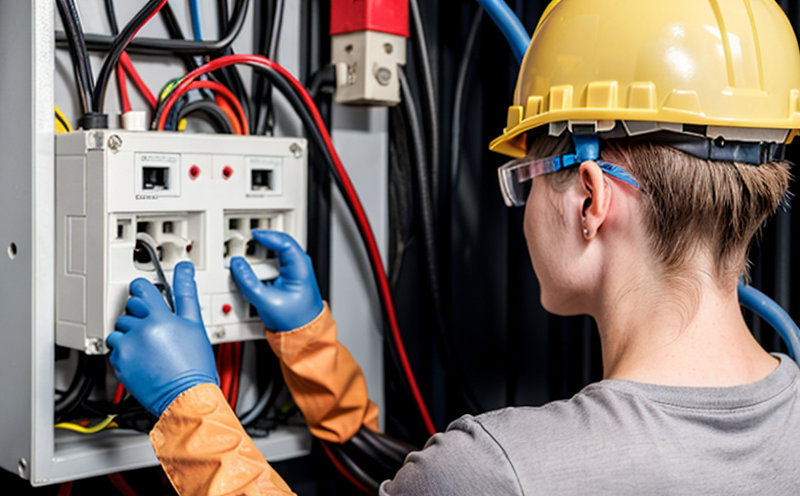CSA E60730 Automatic Controls Electrical Safety in IoT Devices
The CSA (Canadian Standards Association) standard E60730 is a crucial document for ensuring the electrical safety and compliance of automatic controls found in Internet of Things (IoT) devices. This standard is designed to protect end-users from electrical hazards, such as shocks or fires, by addressing potential risks related to design, manufacturing, installation, and operation.
CSA E60730 covers the safety requirements for automatic controls used in a wide range of IoT devices including smart home appliances, security systems, lighting controls, and other connected devices. The standard ensures that these products meet stringent electrical safety criteria, which is critical as more homes and businesses integrate IoT technology into their daily lives.
The compliance with this standard helps manufacturers ensure that their products are not only safe but also compatible with global regulatory requirements. This is particularly important for companies aiming to export their IoT devices internationally or sell them in markets where CSA certification is a prerequisite.
The testing process under CSA E60730 involves several key procedures, including:
- Evaluation of the overall electrical safety of automatic controls
- Testing for electrical insulation integrity
- Verification of protective measures against overcurrent and overvoltage conditions
- Assessment of fault protection mechanisms in place
- Evaluation of electromagnetic compatibility (EMC) to ensure the device does not interfere with other electronic devices
These tests are conducted using industry-standard equipment and methodologies, ensuring that all aspects of safety and compliance are thoroughly examined. The results provide manufacturers with a comprehensive understanding of their product's performance and any potential areas for improvement.
The importance of CSA E60730 cannot be overstated, especially given the increasing complexity and interconnectedness of IoT devices. By adhering to this standard, companies can demonstrate their commitment to quality and safety, thereby building trust with consumers and regulatory bodies alike.
Why It Matters
The safety of automatic controls in IoT devices is paramount due to the increasing reliance on these technologies for critical functions within homes and businesses. The potential risks associated with electrical hazards can lead to severe injuries or even fatalities, making compliance with standards like CSA E60730 essential.
Compliance ensures that:
- Products are free from defects that could cause harm
- User interfaces and instructions are clear and safe to use
- There is no risk of fire, explosion, or electric shock during normal operation
- The device operates within specified limits under all conditions
Failure to comply with these standards can result in product recalls, legal action, and damage to brand reputation. Furthermore, non-compliance may prevent the sale of products in certain regions that require specific certifications.
Benefits
- Enhanced Product Safety: Ensures that IoT devices do not pose any electrical hazards to users.
- Global Market Access: Facilitates the sale of products in regions that require specific certifications like CSA E60730.
- Improved Brand Reputation: Demonstrating commitment to quality and safety can significantly enhance brand reputation among consumers.
- Reduced Risk of Product Recalls or Legal Action: Compliance minimizes the risk of product recalls or legal action, thereby protecting both manufacturers and end-users.
Quality and Reliability Assurance
The quality and reliability assurance processes under CSA E60730 are designed to ensure that IoT devices meet the highest standards of electrical safety. This involves a multi-step process that includes:
- Initial Design Review: Ensures compliance with the standard at the design stage.
- Prototype Testing: Evaluates the initial prototype for any potential issues before mass production.
- Production Sampling and Inspection: Randomly selects a sample of units from the production line to test them against the standard.
- Final Acceptance Testing: Conducts comprehensive tests on the final product to ensure all safety criteria are met.
The rigorous testing process ensures that each IoT device meets the stringent requirements set by CSA E60730. This not only enhances product quality but also builds trust with consumers and regulatory bodies, ultimately leading to greater market acceptance and sales.





